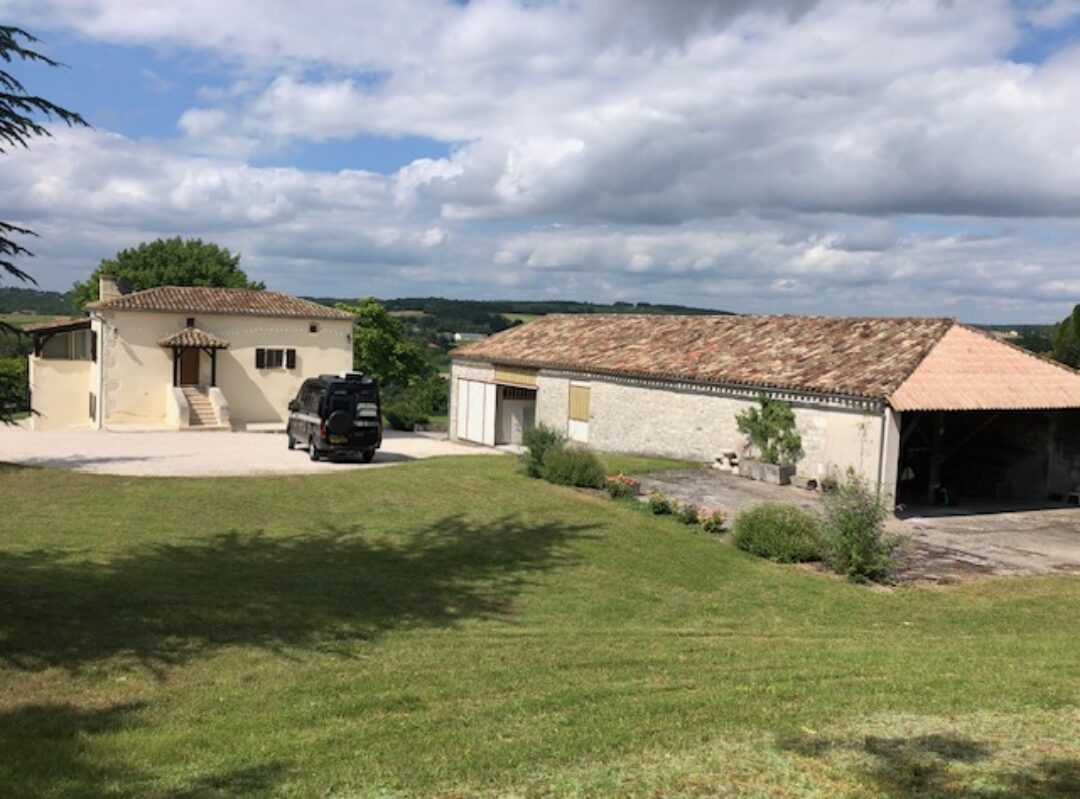We’re travelling in parts of France that neither of us has visited before and the scenery continues to be as stunning as anything we’ve seen previously. We have also tried out a new kind of overnight stop which turned out to be a success. We left the Route Napoleon which continues on to Grenoble and turned west following the valley of the river Drôme, a beautiful valley bordered by tree covered mountains that don’t seem as threatening or closed in as those we’ve been surrounded by recently. As well as the free apps we use to find overnight stops, we also signed up to a scheme called France Passion which brings together French producers who are happy to allow a small number of self-sufficient motorhomes to park overnight on their premises. There is no charge to stay but there is an expectation that you will engage with the hosts, be they wine, cheese, fruit, olive oil, etc. producers, to learn about what they do and perhaps sample or purchase their produce. We found a vineyard host – Domaine Raspail – along our route at Saillans and were welcomed warmly by the lady in the shop and directed to our parking area alongside the vines. The wine speciality of this region is the sparkling wines Crémant and Clairette de Die and we were invited to a tasting. We learned that the Crémant is a traditional method sparkling wine whilst the Clairette is semi-fermented with less alcohol and slightly sweeter. Both wines were very good and We were happy to buy some to enjoy at a later date (if it lasts that long). We hadn’t heard of this small wine region before and we were told that the vineyard sells most of its produce from the cellar door or to local restaurants and high-end grocers so you probably won’t find it beyond this specific area.


The vineyard lies next to the river and we were able to walk through the vines and along the river and then spent a very peaceful night on the premises. We’re looking forward to trying out stops at more of the scheme member locations.

Nearby was the attractive town of Crest with its large tower, the highest keep in France, and from here we started to head north. Our rather circular route has been deliberate because we wanted to explore the centre of the Vercors National Park, an area to the south-west of Grenoble. Some of the roads that run directly through the mountains would be too challenging for the van and trailer, but definitely worth exploring on the motorbike. So we decided to base ourselves at the north of the national park and explore from there. Our route took us past some beautiful villages on the Isère river, including Saint-Nazaire-en-Royans, known for its aqueduct standing high over the medieval village and for boat trips on a paddle-wheel boat. A group of schoolchildren were lucky enough to be enjoying a boat trip while we were there and overhead a group of young people were learning to abseil from the aqueduct.





A few miles down the road was our base for a few days, the riverside village of Pont-en-Royans. The Motorhome site, a former municipal camping site, was right on the river Bourne, so Joe could get out in his boat again, and with a riverside walk along to the village where houses ‘maisons suspendues’ hang from the rock cliffs. The village is also the starting point for several lovely walks in the nearby hills of this lush and verdant region. Once we were out on the motorbike, riding under low rock overhangs we knew we had made the right decision not to drive those roads in the van! We followed the Gorges de la Bourne out of the village and then turned south towards Vassieux en Vercors.



The Vercors region was a bastion of the French Resistance during WWII with one of the most important maquis in the free zone and the natural geography of the area certainly lends itself to this.The village of Vassieux-en-Vercors was the main parachute center for Allied aircraft on the plateau. Very heavily bombed on 14th July 1944, it was attacked by 24 German gliders on 21-22 July and 72 of its inhabitants were massacred and all of its houses burned down. The town received the Cross of the Liberation on 4 August 1945 in recognition of the patriotism shown by its inhabitants.Today the town has a museum, a memorial and a necropolis celebrating its history.


From Vassieux the road heads north and is named Combe Laval, a stunning balcony road carved into the rock and running along the 4km deep cut formed by a stream and with a belvedere at the highest point of 1200 metres. The road was built over five years in the 19th century to take wood from the Lente Forest down to the valley and and the Rhône and Isère rivers and was opened in 1898. Although there road is no longer needed for transporting wood, it is now a major tourist attraction in the Vercors and attracts many motorcyclists. We were fortunate not to have lots of other traffic so could enjoy the heart stopping views at a leisurely pace.



